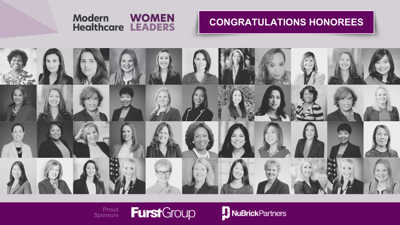The healthcare industry is in a time of historic change. Hospitals and health systems are merging and acquiring each other; health insurers are doing the same.
The healthcare industry is in a time of historic change. Hospitals and health systems are merging and acquiring each other; health insurers are doing the same. The provider and payer worlds themselves are converging as health systems create their own health plans and insurers are affiliating with providers.
But no one should read into what is happening now as a guarantee of what the industry will look like when the tectonic plates stop shifting, says Karen Ignagni, the new CEO of EmblemHealth who recently completed an incredibly influential run as CEO of America’s Health Insurance Plans (AHIP). Ignagni spoke with Furst Group during her final days at AHIP and before taking over at EmblemHealth.
“The way to think about convergence is that it’s the beginning of numerous possibilities,” she says, “and how it evolves will be dependent upon individual market dynamics and individual stakeholder leadership.”
Despite the uncertainty, it should be an exciting time for innovators, Ignagni notes.
“It’s crucial to be open-minded and not think the past is prologue,” she says. “Some folks love that idea; others who are looking to continue a strategy charted some years ago are terrified by it. There’s no handbook for where we are today. As a leader, you need to understand that and be willing to take out a blank piece of paper and create your vision.”
Ignagni leaves no uncertainty as to where she stands on that issue.
“If you can think about this as the best of times, then you’ll have an opportunity to make an enduring contribution.”
She says it was her desire to make a new kind of contribution that led to her decision to leave AHIP, the organization she had forged, and take the reins at EmblemHealth.
“First of all, leading AHIP is one of the best jobs in the country with the best team in the country,” Ignagni says, “But I’m excited about this new chapter. I’m thankful to the Emblem board for the opportunity to move from representing what our companies are doing to actually doing the work and taking an operations role in a health plan serving working families, seniors and the medically underserved.
“For me, it is coming full circle,” she adds, noting that she worked for the AFL-CIO in the ‘80s, where one of her roles was fighting for health benefits for union members.
More recently, of course, Ignagni was a pivotal player in the reform debate. Her advocacy was a signature moment in a career that saw her as arguably the most powerful payer voice for more than two decades – she previously led the American Association of Health Plans and guided AAHP’s merger with the Health Insurance Association of America that formed AHIP.
Despite the changes that the Affordable Care Act has brought, Ignagni agrees that the entire health care industry still has a long way to go to begin to meet consumers’ expectations.
“The health arena has to become much more like Amazon,” she says. “When I go on Amazon, they know who I am, I don’t have to re-enter all of my information, and things come overnight. That’s the customer-service standard that we in the health care arena need to emulate—everything needs to happen in real time.”
The status quo, she warns, won’t fly with consumers any more.
“Health care stakeholders need to embrace transparency,” Ignagni says. “For example, how much does a drug really cost? Right now, it is a black box of pricing. With pharmaceutical companies, the rhetoric is all about innovation. But how much of the price consumers are being asked to pay is for innovations, marketing and sales, and profit-taking? In the health plan community, consumers know precisely the answers to these questions. Now regulators will use the reporting structure for health plans to ask pharmaceutical companies similar questions.”
Payers have outed providers by revealing hospital pricing during the unprecedented wave of health-system mergers, and also has taken the pharma industry to task for what it views as price-gouging, like $84,000 Hepatitis C treatments. Ignagni, as the payers’ chief lobbyist, has led that charge.
“Our motivation as health plans is to get the price of the premium as affordable as possible for consumers. That’s a very different objective than a large pharmaceutical company charging whatever it can, or a hospital consolidating so it can raise all of its pricing to the level of the highest priced hospital in the network.”
She acknowledges that, under the new paradigm of convergence, payers and providers will need to work together. But payers must be equal partners in the arrangement, she warns.
“Health plans have an advantage in population health,” she says. “We’ve already written the book on it. It’s not a future state we’re evolving to -- we're there with our focus on disease management and care coordination. Now the question is, how do health plans bring these skills together with clinicians and hospitals to create new payment arrangements that result in more efficiency and effectiveness for patients?”
To get the industry to where it needs to go in these areas, Ignagni says, will take a new level of leadership. Leaders, she says, will need “resilience, agility, and the ability to handle a significant amount of unpredictability, because we are talking about writing a new chapter.”
Even with her new role, don’t be surprised if Ignagni is one of the primary co-authors of this next passage for the healthcare industry.


